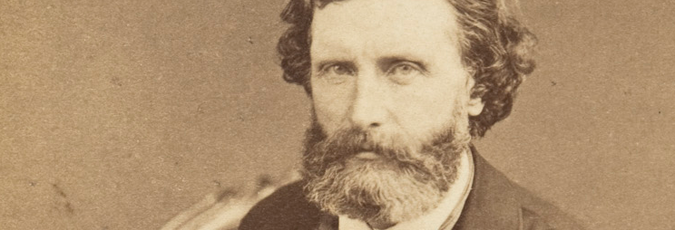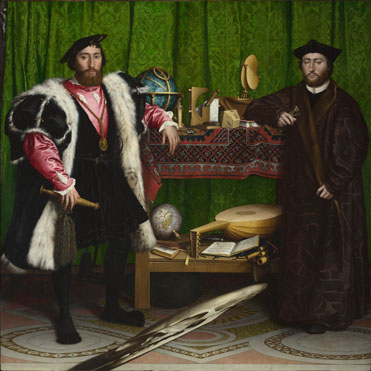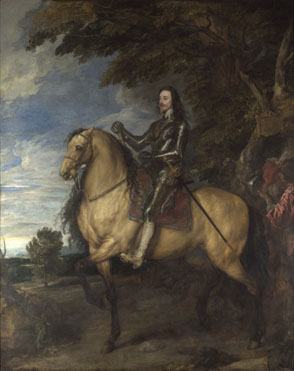Acquisitions and extensions
Suspension of the Annual Grant
As Director, Burton, like his predecessors, had ultimate authority to make purchases for the Gallery. Unlike them, however, he did not have access to an annual government grant of £10,000 for the purchase of pictures. This grant was suspended for several years in 1872 on account of the purchase of the collection of the former Prime Minister, Robert Peel. Although the grant was later reinstated, it was suspended again in 1885 after the Gallery had purchased pictures at the famous Blenheim Palace sale. As a result, Burton had to apply for funds from the Treasury. Sometime his requests were refused.
In 1888, frustrated by the Government’s failure to fund some suggested purchases, William Gregory wrote to the Treasury supporting the Director’s judgment and the need for the Gallery to buy pictures to illustrate the history of art through the collection, rather than just acknowledged masterpieces. In 1890, Burton acquired Holbein’s ‘The Ambassadors’ from the Longford Castle collection, partly through contributions from private donors.
Nonetheless, Burton and his Trustees purchased several paintings that are still regarded as highlights of the Gallery’s collection including, Leonardo’s ‘Virgin of the Rocks’, Botticelli’s ‘Venus and Mars’, Velázquez’s ‘Philip IV of Spain in Brown and Silver’ and Duccio’s ‘Annunciation’.
Country house sales
Burton’s Directorship coincided with a period of economic difficulty for the English aristocracy on account of an agricultural depression. As a result, many landowners chose to sell masterpieces from their collections. Despite competition from wealthy foreign collectors and museums, the National Gallery authorities, aided by leading figures in the art world and the popular press, fought to persuade the Government to fund such purchases. As a result, the Gallery was able to purchase Raphael’s ‘Ansidei Madonna’ and Van Dyck’s ‘Equestrian Portrait of Charles I’ in 1885, from the Blenheim Palace collection.
Mummy portraits and copies
Burton also made some more unusual acquisitions, including a group of 1st-century mummy portraits that he acquired in 1888 and which were transferred to the British Museum in 1994. Burton claimed he was interested in them as they illustrated the development of the technique of painting and regarded them as useful background for the Gallery’s collection of European art.
Burton also accepted a group of copies of pictures by Velázquez at the Prado Gallery, Madrid, by an English artist, Charles Maloney, which he regarded as useful study aids in a period when Spanish art was becoming more popular.
Gallery extensions
The opening of the Barry Rooms, a suite of eight galleries (rooms 32-38 and 40), designed by E. M Barry, proved very popular and allowed for the display of the entire collection for the first time. Nevertheless, space was still lacking and some pictures had to be displayed on easels. In 1887, the architect Sir John Taylor’s Central Hall and portico were built and decorated by the same firm, J.D Crace and Sons. The additional space meant that the paintings could be arranged within the galleries according to their respective country and region of origin for the first time in the Gallery's history.
Rosebery Minute and legacy
Burton retired in April 1894. Several days later, the Treasury issued a controversial Minute now known commonly as the ‘Rosebery Minute’ after the newly elected Prime Minister, Lord Rosebery. The Minute reduced the Director to the ‘chief executive and administrating authority of the Gallery’ who did not have authority over the Trustees but who had an equal vote with them on key issues such as acquisitions, management, cleaning and restoration matters.
It is unclear why Rosebery issued the Minute. It may have been to do with Burton’s acquisition policy, the increased cost of pictures, or perhaps because his Trustees had become so active during his Directorship that it was thought that they ought to be afforded a more important role. The Gallery’s days of active purchasing, on the other hand may have been thought to have ended and the collection to be sufficiently comprehensive so the guiding hand of a Director was no longer necessary. Whatever the reason may have been, it caused difficulties for future directors both in terms of making acquisitions and in terms of their relationship with their Trustees.



